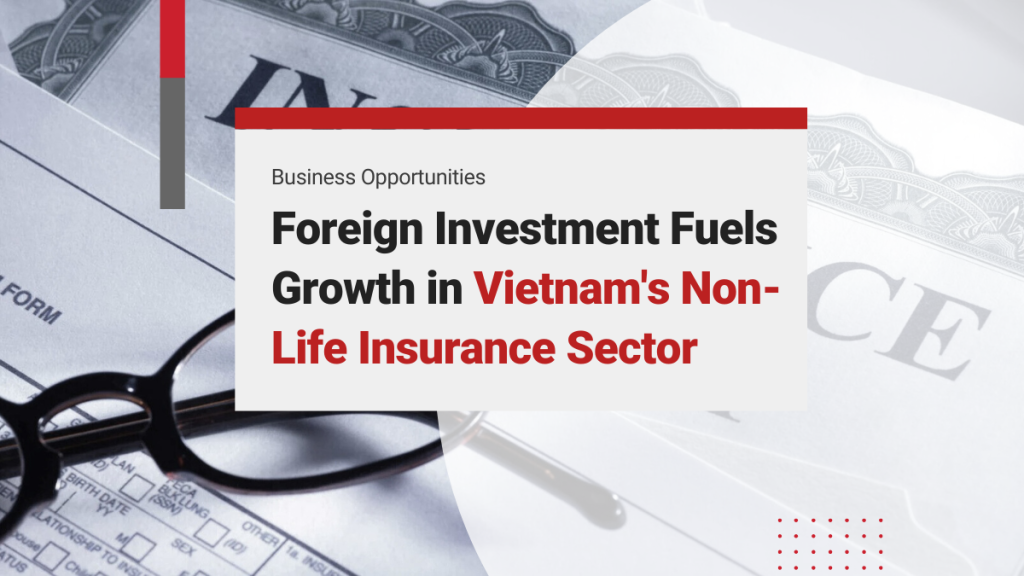Vietnam’s non-life insurance sector is witnessing significant growth, fueled by favorable regulatory changes and rising foreign investments. The introduction of the 2023 Insurance Business Law, which allows setting up 100% foreign-owned company in vietnam, has made the market more appealing to international insurers.
This article explores the effects of these regulatory reforms, assesses recent market performance, and provides insights into future growth projections for Vietnam’s expanding non-life insurance industry.
Regulatory Reforms Drive Growth in Non-Life Insurance Sector
One of the most significant changes propelling the non-life insurance sector in Vietnam is the new Insurance Business Law implemented in 2023. This law has revolutionized the industry by allowing foreign investors to own up to 100% of insurance and reinsurance companies in Vietnam. This change has not only attracted a plethora of foreign direct investments but also streamlined the licensing requirements, making it easier for new insurance enterprises to establish themselves in the market.
Additionally, the new regulations permit foreign insurance entities to set up reinsurance branches within Vietnam, further broadening the scope for foreign participation. The shift from solvency margins to a capital adequacy ratio aligns insurance industry practices with banking standards, enhancing risk management and internal controls. This alignment is expected to attract even more foreign investors, who are looking for stable and regulated environments to invest their capital, as supported by the international finance corporation.
The new law has reduced operational barriers for insurers by eliminating the need for compulsory insurance on professional liabilities in certain professions. These regulatory changes, along with the stable regulatory environment, have driven growth in Vietnam’s non-life insurance market, making it a lucrative destination for foreign direct investment.
Read Related: Vietnam FDI: Analysis of Industries, Countries, and Geographical Regions
Market Performance and Growth Rates
Vietnam’s non-life insurance sector has shown impressive performance, overcoming broader challenges in the insurance industry. In the first nine months of 2023, while the total insurance premium revenue in Vietnam saw a decrease of 6.9%, the non-life insurance sector experienced a 2.6% increase in premium revenue, amounting to approximately US$2.2 billion. This growth is a testament to the sector’s resilience and the effectiveness of recent regulatory reforms.
Non-life insurers listed on the stock market achieved a remarkable 59% growth in after-tax profits within the first nine months of 2023. This double-digit growth in premium revenue during the first half of 2023 highlights the sector’s rapid growth potential. The annual growth rate for Vietnam’s non-life insurance market is anticipated to be 4.26% between 2024 and 2029, indicating a stable upward trend.
Vietnam’s non-life insurance sector has consistently exceeded expectations, averaging an annual premium growth of 11% from 2012 to 2023, fueled by foreign direct investment and rising demand for commercial insurance.
Vietnam’s insurance market is projected to reach around US$5.75 billion in gross written premiums by 2024, with average per capita spending expected to be US$57.79. This robust growth trajectory underscores the sector’s significant potential and the increasing consumer engagement in non-life insurance products.
Read Related: Vietnam Has Some of the Lowest Labor Costs and Average Business Setup Expenses in Asia
Key Segments in Non-Life Insurance
The non-life insurance sector is composed of several key segments that drive its growth, such as property, motor vehicle, and health insurance. Property insurance stands out as a significant growth driver, influenced by substantial government investments in infrastructure and energy. This segment provides financial protection against risks associated with property damage, ensuring stability for both businesses and homeowners.
Motor vehicle insurance is another crucial segment, offering coverage against damages and losses related to vehicles. With the increasing number of vehicles on the road, the demand for comprehensive motor vehicle insurance continues to rise, contributing significantly to the market volume.
Health insurance also plays a vital role, providing coverage for medical expenses and promoting financial security for individuals and families. These segments collectively increase market demand by addressing various risks associated with properties, vehicles, and health. Offering diverse non-life insurance products allows insurers to meet the broad needs of consumers, driving continuous growth in the sector.
Read Related: Understanding Vietnam Social Insurance: Social, Health & Unemployment Insurance (SHUI) for Employees
Impact of Foreign Investors on Non-Life Insurance Companies
Foreign investors have significantly influenced the development of non-life insurance companies in Vietnam. Major foreign investors like AXA Insurance Finance Group and Firstland Company Limited hold significant stakes in Bao Minh Insurance, illustrating the strategic importance of foreign capital in the sector. These investments bring not only capital but also expertise and global best practices, enhancing the operational capabilities of local insurers.
The involvement of foreign investors has led to the introduction of innovative insurance products and services tailored to meet the evolving needs of the Vietnamese market. This influx of foreign investment has also facilitated the adoption of advanced technologies and improved risk management practices, thereby boosting the overall efficiency and competitiveness of non-life insurance companies.
Investing in Vietnam? Check out InCorp Vietnam’s Incorporation Services
Challenges Facing the Non-life Insurance Market
Despite significant growth and positive foreign investment impacts, Vietnam’s non-life insurance market faces several challenges. One of the primary issues is the low insurance penetration rate, which was recorded at 2.6% in 2022 and is expected to rise to only 3.5% by 2025. This rate is significantly lower than the ASEAN average of 3.35%, indicating substantial room for improvement.
Intense competition among the 22 active non-life insurance companies in Vietnam poses another challenge. While larger firms benefit from foreign investment, many smaller enterprises struggle to compete, leading to market consolidation and increased pressure on these companies to innovate and differentiate their offerings.
Furthermore, recent mis-selling scandals have negatively impacted consumer confidence in the non-life insurance market, making potential buyers more cautious. Addressing these challenges requires a concerted effort from both industry players and regulators to enhance transparency, build consumer trust, and promote the benefits of non-life insurance products.
Read More: Top 10 Issues Businesses Encounter in Vietnam
Technological Advancements in the Non-life Insurance Sector
Technological advancements are revolutionizing the non-life insurance sector, enhancing customer experiences and operational efficiency. The authorization of online sales of insurance products has expanded distribution channels beyond traditional methods, making it easier for consumers to purchase policies. This shift towards digital channels is meeting the growing demand for convenient and accessible insurance solutions.
Cloud technology adoption is on the rise among insurers, driven by the need for flexible and scalable digital infrastructure. This technology enables insurers to manage large volumes of data efficiently, improving their ability to assess risks and process claims. Additionally, the use of low-code and no-code platforms allows non-technical employees to develop and manage insurance applications swiftly, fostering innovation and reducing time-to-market for new products.
Digital ecosystems are further enhancing customer experiences by integrating insurance products with complementary services. These tech-driven solutions, such as digital platforms and cloud computing, are reshaping the non-life insurance sector, making it more responsive to consumer needs and more efficient in its operations. As technology continues to evolve, it will play an increasingly critical role in the sector’s growth and transformation.
Read More: Future-Ready Digital Infrastructure Strategy Approved for 2025 in Vietnam
Future Projections for the Non-Life Insurance Sector
Looking ahead, the future of Vietnam’s non-life insurance sector appears promising. By 2028, the market volume is expected to reach around US$6.87 billion, reflecting a steady annual growth rate of 4.55% from 2024 to 2028. This growth trajectory underscores the sector’s potential and the increasing consumer engagement in non-life insurance products.
In the near term, the market is projected to grow to about US$5.75 billion by 2024, with an average expenditure per person in the non-life insurance sector forecasted to be US$57.79 billion. This rise in per capita spending indicates a growing awareness and adoption of non-life insurance among consumers, driven by the increasing demand for commercial lines insurance.
The continued growth of the non-life insurance market underscores its importance within Vietnam’s broader insurance sector. Market expansion will create new opportunities for existing players and new entrants, fostering a competitive and dynamic environment that benefits both consumers and insurers.
Key Takeaways
- The 2023 Insurance Business Law in Vietnam permits 100% foreign ownership and streamlines licensing, driving growth in the non-life insurance sector.
- Vietnam’s non-life insurance sector reported a 2.6% increase in premium revenue in 2023, contrasting with a decline in the overall insurance market, reflecting strong resilience and growth potential.
- Key segments like property, motor vehicle, and health insurance, coupled with foreign investment, have significantly contributed to the sector’s performance, despite challenges such as low insurance penetration and market competition.
How InCorp Vietnam can Help?
InCorp Vietnam provides essential support to foreign investors and businesses seeking entry or expansion in Vietnam’s growing non-life insurance sector. Leveraging extensive expertise in regulatory compliance and market entry, InCorp Vietnam guides clients through the complex regulatory framework, ensuring they meet all local legal requirements. Our team assists with securing the necessary licenses, understanding the nuances of Vietnam’s insurance regulations, and adapting to recent reforms under the 2023 Insurance Business Law. With tailored solutions and in-depth insights, InCorp Vietnam enables clients to establish a strong, compliant foundation for success in this dynamic market.

clients worldwide

professional staff

incorporated entities in 10 years

compliance transactions yearly
Learn the Right Setup for Business
Expansion in the Vietnam
Frequently Asked Questions
What are the advantages of non-life insurance?
- Non-life insurance provides financial protection against losses from events such as accidents, natural disasters, theft, or liability claims. It helps individuals and businesses manage risk by covering costs that would otherwise result in significant out-of-pocket expenses. Additionally, having non-life insurance may be legally required in some cases, such as auto or liability insurance.
What is life vs non-life insurance?
- Life insurance provides financial protection against the death of the insured, typically paying a lump sum to beneficiaries. Non-life insurance (also called general insurance) covers risks other than death, such as property damage, health expenses, motor vehicle accidents, and liability claims.
What is the meaning of non-life insurance?
- Non-life insurance refers to insurance policies that cover risks other than life, such as property damage, liability, health, and accidents. These policies provide financial protection against losses from events like fire, theft, vehicle accidents, or medical expenses.






